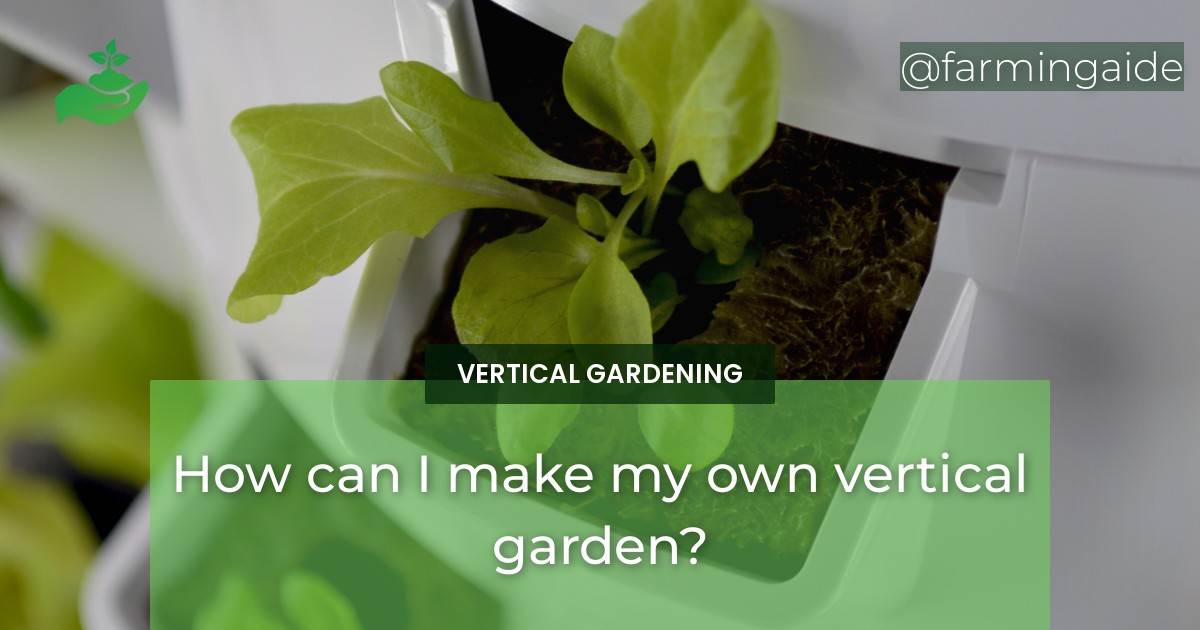If you are looking for a fun and creative way to add greenery to your home, a DIY vertical garden might be the perfect solution. With a little creativity and the right materials, you can turn any wall or outdoor space into a beautiful living work of art.
In this article, we will guide you through the process of building a custom vertical garden, provide step-by-step instructions, offer project ideas, and share tips for maintaining your new garden.
Materials and Tools for DIY Vertical Garden ProjectsMaterials Needed:Tools Needed:Step-by-Step Instructions for Building a Vertical GardenChoose a Location for Your Vertical GardenChoose the Type of Plants for Your Vertical GardenBuild the Frame for Your Vertical GardenInstall the Irrigation SystemAdd Soil and Plants to Your Vertical GardenMaintain Your Vertical GardenDIY Vertical Garden Projects IdeasVertical Pallet GardenHanging Gutter GardenTiered Herb GardenTips for a Successful Vertical GardenChoose the Right Plants for Your Vertical GardenEnsure Proper Drainage and Soil MoistureInstall the Irrigation System CorrectlyRegular Maintenance of Your Vertical GardenBenefits of Vertical GardeningSaves SpaceIncreases YieldImproves Air QualityReduces Energy ConsumptionConclusionRecap of the Benefits of Vertical GardeningEncouragement to Try DIY Vertical Garden Projects
Materials and Tools for DIY Vertical Garden Projects
Materials Needed:
Wooden pallets
Plant containers (plastic, ceramic, or clay)
Galvanized metal buckets
Hanging baskets
Plants (herbs, succulents, ferns, etc.)
Soil
Irrigation tubing
Staples or hooks
Sandpaper
Paint or stain (optional)
Tools Needed:
Drill
Saw
Screwdriver
Tape measure
Scissors
Hammer
Step-by-Step Instructions for Building a Vertical Garden
Choose a Location for Your Vertical Garden
The first step in building your own vertical garden is to choose a location. Consider the amount of sunlight the area receives and how much space you have to work with. You can create a vertical garden indoors or out.
Choose the Type of Plants for Your Vertical Garden
Once you have chosen a location for your garden, it’s time to select the plants you want to grow. Consider the amount of sunlight and water the plants need and choose plants that will thrive in your specific environment.
Build the Frame for Your Vertical Garden
Next, you will need to build a frame for your garden. This can be done using wooden pallets, a trellis, or even a hanging shoe organizer. Cut the pallets to size and sand down any rough edges. If you’re using a trellis or shoe organizer, make sure it’s securely attached to the wall.
Install the Irrigation System
To keep your vertical garden healthy, you will need to install an irrigation system. This can be as simple as running a length of tubing along the top of the garden and attaching it to a water source.
Add Soil and Plants to Your Vertical Garden
Once your frame and irrigation system are in place, it’s time to add soil and plants to your garden. Fill your containers with soil and plant your chosen plants. Be sure to leave enough space between each container to allow the plants to grow.
Maintain Your Vertical Garden
Regular maintenance is key to keeping your vertical garden healthy and thriving. Water your plants regularly, prune as necessary, and make sure your irrigation system is working properly.
ALSO READ
DIY Vertical Garden Projects Ideas
Vertical Pallet Garden
A vertical pallet garden is a great way to repurpose old wooden pallets. Simply attach the pallet to the wall and fill the spaces between planks with soil and plants.
Hanging Gutter Garden
A hanging gutter garden is a unique way to add greenery to any wall. Attach a length of gutter to the wall and fill it with soil and plants.
Tiered Herb Garden
A tiered herb garden is a great way to grow a variety of herbs in a small space. Stack plant containers of varying sizes and fill them with soil and herbs.
Tips for a Successful Vertical Garden
Choose the Right Plants for Your Vertical Garden
When selecting plants for your vertical garden, choose plants that will thrive in your specific environment. Consider the amount of sunlight and water the plants need.
Ensure Proper Drainage and Soil Moisture
Proper drainage and soil moisture are essential to keeping your plants healthy. Make sure your containers have drainage holes and that your irrigation system is working properly.
Install the Irrigation System Correctly
An irrigation system that is installed incorrectly can damage your plants. Make sure your system is properly installed and functioning before planting.
Regular Maintenance of Your Vertical Garden
Regular maintenance is essential to keeping your vertical garden healthy and thriving. Water your plants regularly, prune as necessary, and make sure your irrigation system is working properly.
ALSO READ
Benefits of Vertical Gardening
Saves Space
Vertical gardening is a great way to save space. With a little creativity, you can turn any wall or outdoor space into a beautiful living work of art.
Increases Yield
A vertical garden can actually increase your yield. By planting vertically, you can fit more plants in a smaller space.
Improves Air Quality
Plants are great for improving air quality. A vertical garden can help purify the air in your home or outdoor space.
Reduces Energy Consumption
Vertical gardening can actually help reduce your energy consumption. By shading your home or outdoor space, you can reduce the amount of energy needed to cool your home.
Conclusion
Recap of the Benefits of Vertical Gardening
Vertical gardening is a fun and creative way to add greenery to your home. It’s great for saving space, increasing yield, improving air quality, and reducing energy consumption. With a little creativity and the right materials, you can turn any wall or outdoor space into a beautiful living work of art.
Encouragement to Try DIY Vertical Garden Projects
We hope this article has inspired you to try your hand at DIY vertical gardening. With a little patience and creativity, you can create a beautiful and functional garden that will bring joy to your home for years to come.
RELATED ARTICLES:


